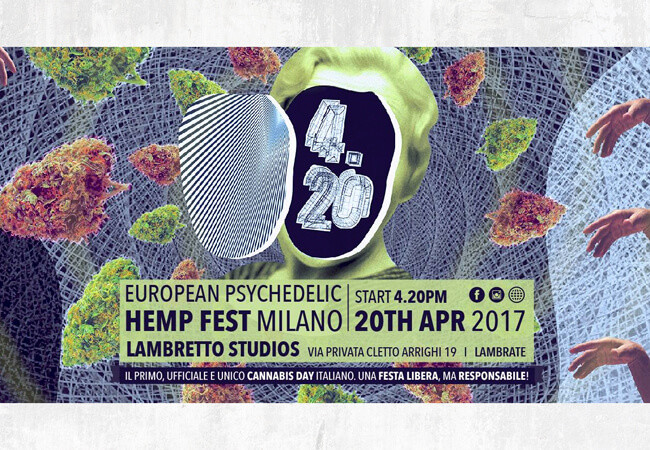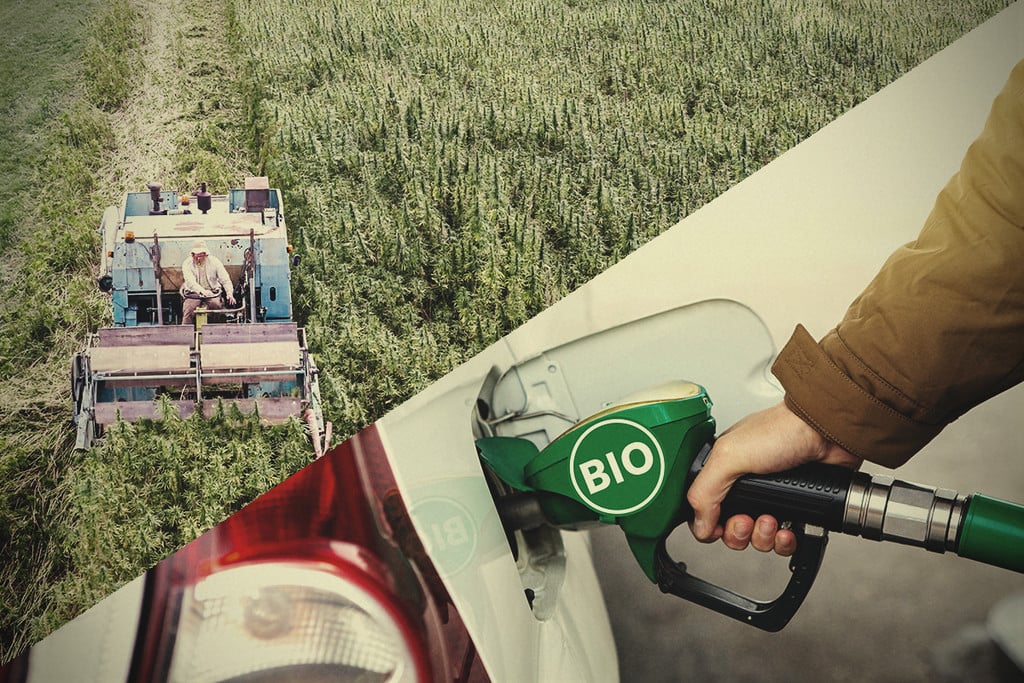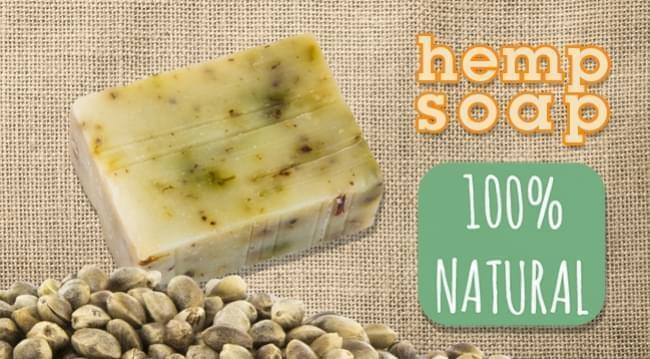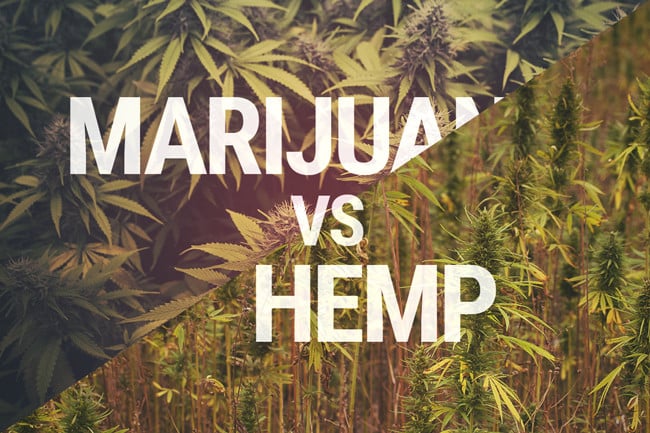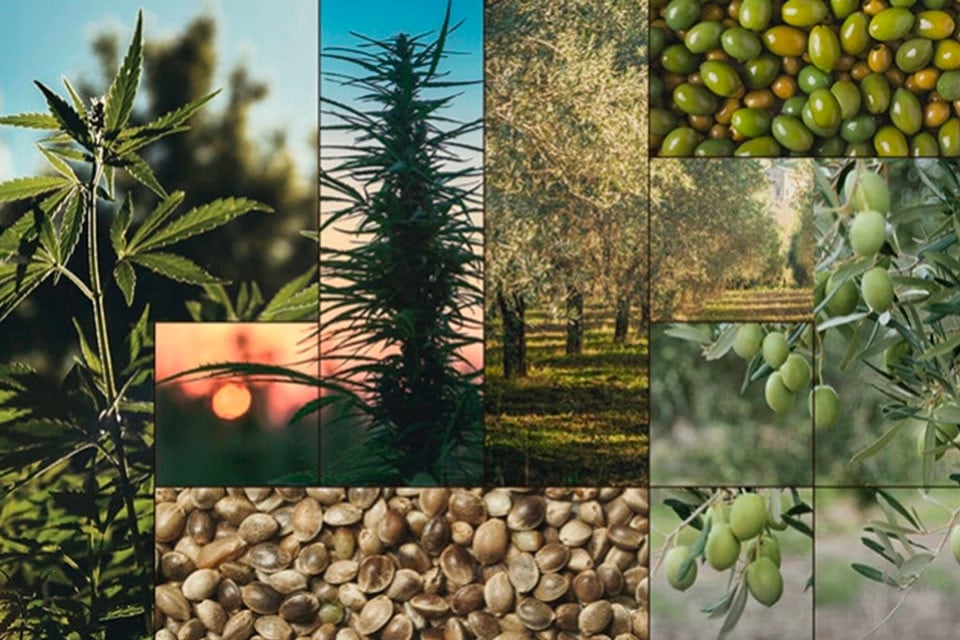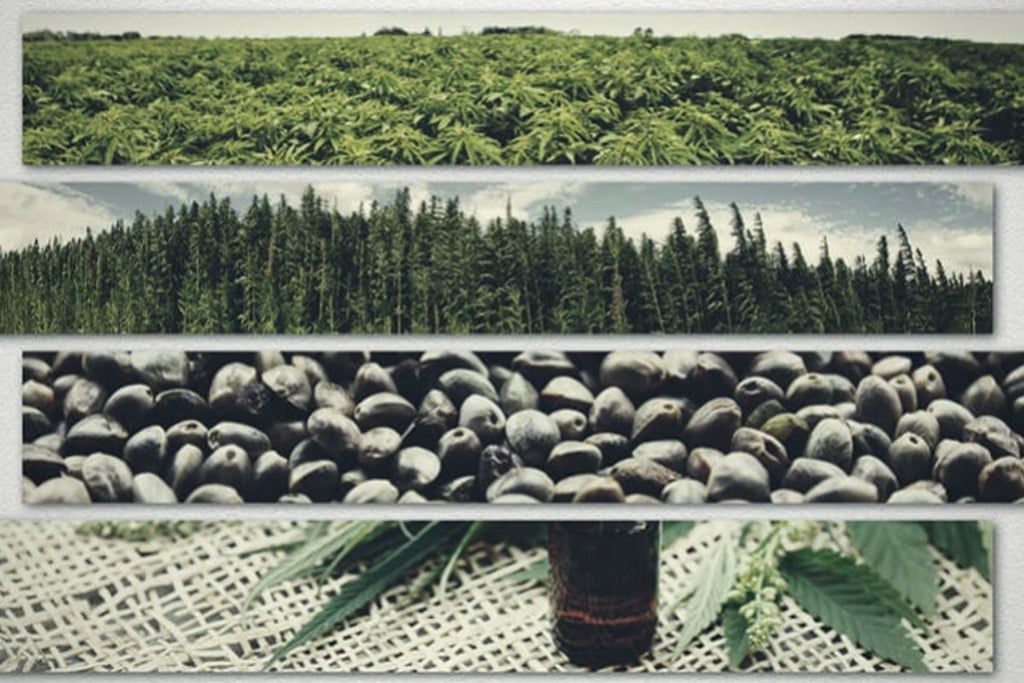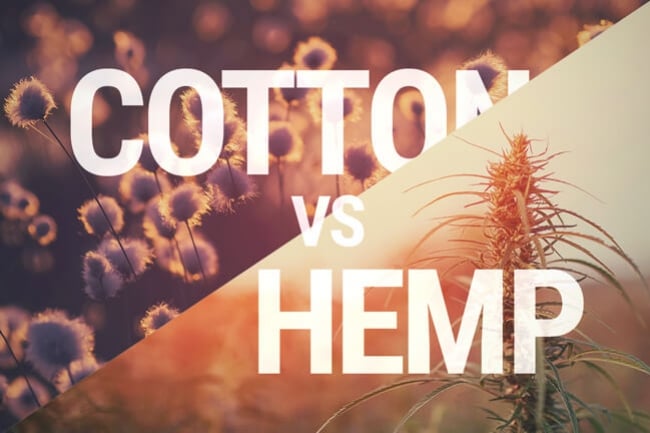.
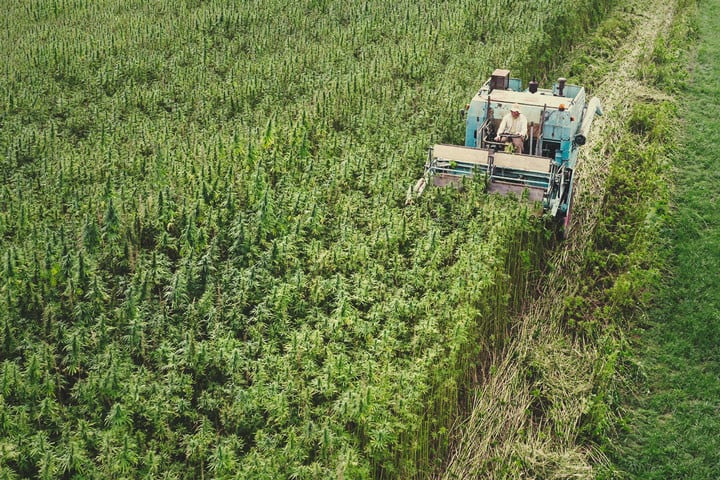
The Past, Present, and Future of Hemp Farming
Though it may feel as though the world is just waking up to cannabis, it has actually been a mainstay of human society for thousands of years—and not just for getting high. Hemp is a resilient and versatile material that can be used in textiles, paper, food, and more. Find out about the history of the hemp industry, and its future, here.
Contents:
We have been farming hemp for thousands of years, and not just to get high. In fact, getting stoned from cannabis has been a more recent development, at least in the West. But what’s the difference between hemp and cannabis?
Well, on a taxonomic level, there isn’t one—they both belong to the species, Cannabis sativa. However, in practice, there are significant differences between them. So for the purposes of this article, hemp refers to plants grown for purposes other than getting high, and cannabis refers to plants grown predominantly for their THC content.
There are also legal distinctions between hemp and cannabis, regarding THC content.
So, what is hemp used for? And how is it farmed? These are some of the questions we’ll be answering below. We’ll also be looking at hemp's new, and potentially most popular, application—the production of non-psychotropic cannabinoids such as CBD.
The History of Hemp Farming
Hemp has been farmed for thousands of years—around 10,000, in fact. The earliest discoveries place the beginning of hemp agriculture at around 8,000 BCE, making it one of the earliest farmed plants. This was in Asia, but it seems to have taken a little longer to reach Europe and the US (in terms of farming).
Europe
In Europe, hemp has been used for both its fibres and as a food source. De Honesta Voluptate et Valetudine, a cookbook from 1475 AD, references health drinks made using hemp. However, it is known that hemp has been used for much longer than that for its tough and malleable fibres. Great for making textiles, rope, building materials, paper, and more, these fibres, alongside flax, constitute one of humanity’s oldest and most reliable materials.
In the 1950s, synthetic materials made an appearance. This dealt a swift and fatal blow to the hemp trade, causing most producers to go out of business. It only really remained a practice in France, and some Eastern European states that were aligned with the Soviet bloc. This was greatly compounded by the UN Single Convention on Narcotic Drugs (1961), which defined cannabis so poorly that many countries simply outlawed hemp to solve the problem.
It is only in recent years, wherein legal THC limits were set to distinguish hemp from marijuana, that large-scale, legal hemp production has surged again in Europe. On an EU level, the THC cutoff is 0.2% THC, but countries are free to set their own limits, and many have. Alongside textiles, building materials, and foodstuffs, much of this boom comes from a growing market for high-CBD hemp seeds and other CBD-rich hemp products. Furthermore, other non-psychotropic cannabinoids, such as CBG, are being extracted from hemp to create an even greater range of products.
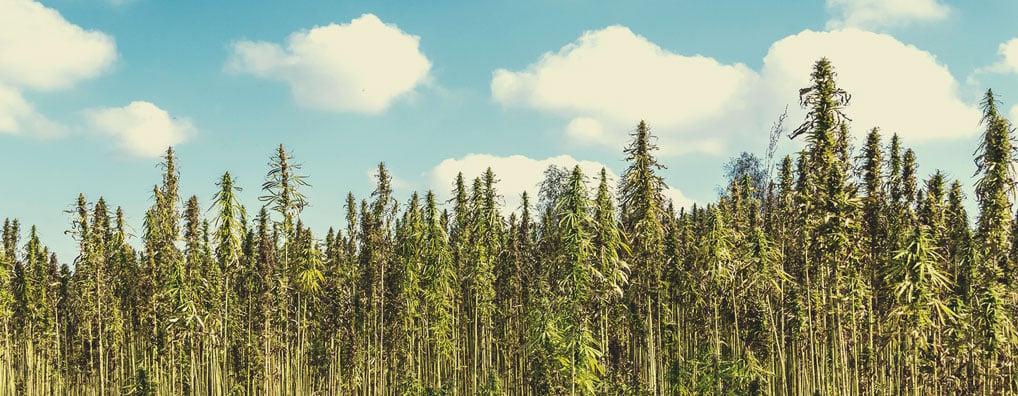
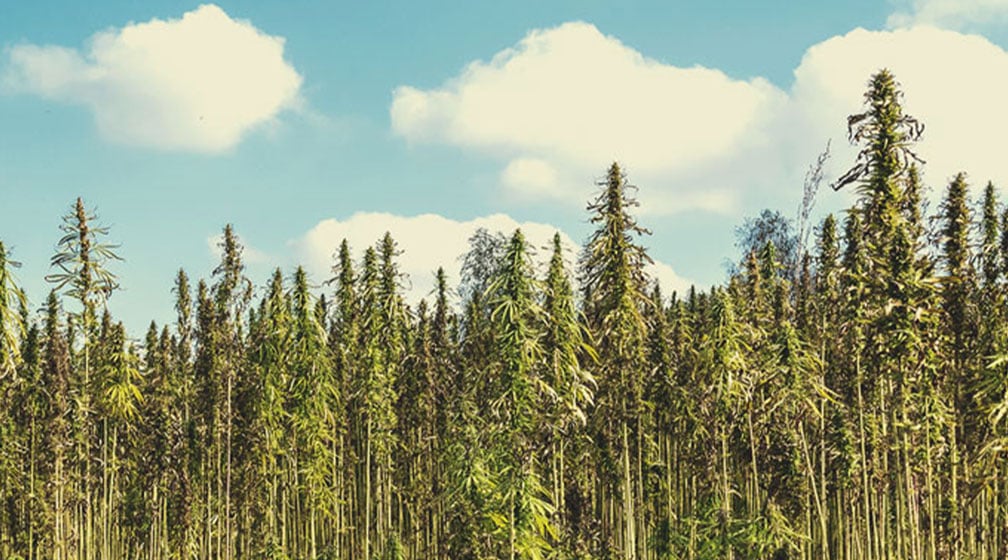
United States
Hemp in the US has had an equally varied and turbulent past. It is known that Native Americans used hemp to make clothes and other materials, although how long they practised this is unknown.
The first English town in what is now the United States was Jamestown, and in 1616, hemp was cultivated there to make clothes, building materials, and sails. From then on, for 300 years, hemp was a very common and popular crop in the US.
However, in 1937, the US government introduced the Marihuana Tax Act, which made hemp cultivation significantly less profitable. From this point on, hemp production in the US began to drop. It picked up again a little during the Second World War, after Japanese imports ceased, but synthetic fibres meant this resurgence was short-lived.
In 1970, as part of the Controlled Substances Act, cannabis was placed under severe restrictions and deemed a dangerous drug, ultimately putting hemp in a very tenuous position as well.
Only in 2018 was hemp fully legalized under the new Farm Bill. This means that any plant containing less than 0.3% THC is legal.
How Is Hemp Used?
Hemp provides a huge amount of useful and sustainable products. As legalization has swept through Europe, Canada, and parts of the US, a resurgence in hemp-based products has occurred. From hemp clothes, to milk, to legal hashish, you can now buy hemp products in almost any kind of shop.
Cannabinoids
We at RQS think hemp is amazing all around, but we love it most for its cannabinoid content. With well over 100 cannabinoids, hemp is packed full of them, and most are hardly understood.
Of course, we don’t use hemp for its THC content, but instead for its CBD content. While this is not the only cannabinoid it’s farmed for, it is the most popular. Hemp grown for CBD shares far more characteristics with cannabis grown for THC than it does with its industrial-fibre-producing namesake. CBD plants grow quickly and produce large yields of cannabinoid-rich flowers. Hemp plants grown for fibres, on the other hand, are tall, slow growing, and produce few flowers.
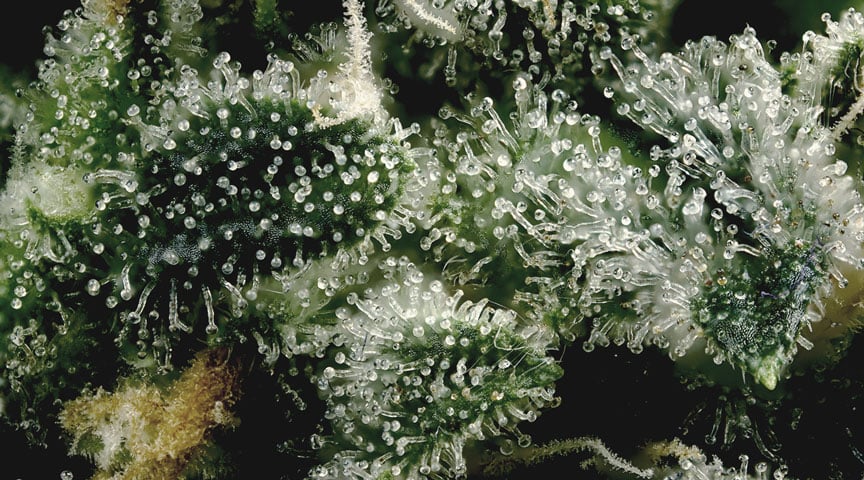
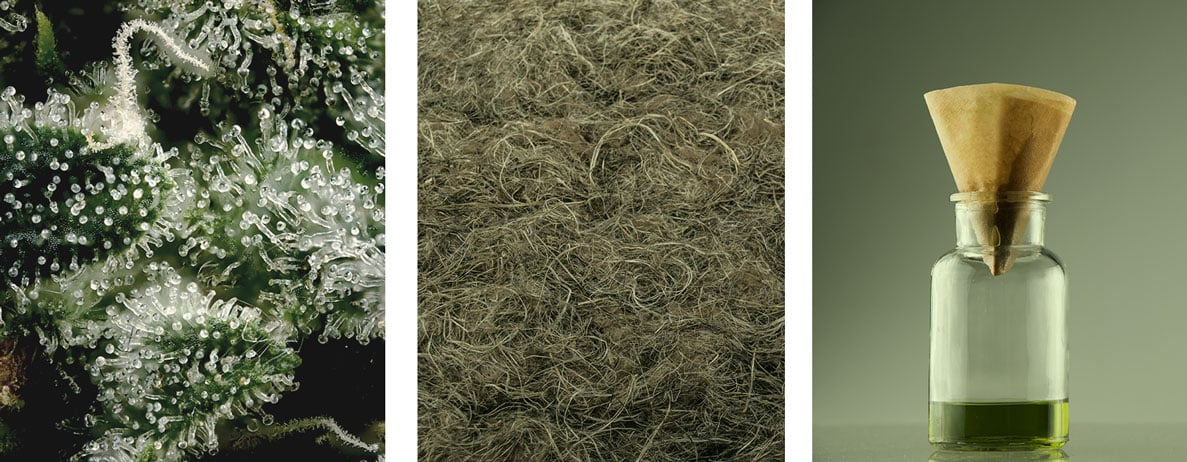
Building Materials
Hemp produces versatile and tough building materials. Industrial hemp plants are grown mostly for their stalks, which produce two products: hemp bast and hemp hurd. Hemp bast are the long fibres taken from the outside of the stem. Hemp hurd are the small, tough fibres found within. Although hurd accounts for around 75% of the mass, it was traditionally considered a useless byproduct of bast. Bast was used to make paper, textiles, rope, and so on.
Recent technological advances have found ways to use hurd, and use it well. One of the most interesting uses of hemp hurd is as the major constituent of “hempcrete”. Hempcrete is made in a similar way to normal concrete, by mixing it with lime and sand and then setting it. It can then be used to make any product that could be made from concrete.
It has some interesting qualities, though. Over time, as it weathers, it actually petrifies and becomes more robust. Concrete, on the other hand, degrades. Moreover, hemp absorbs CO₂, making it a carbon-neutral product, meaning it offsets the carbon used to make it. In time, hempcrete is also recyclable and biodegradable.
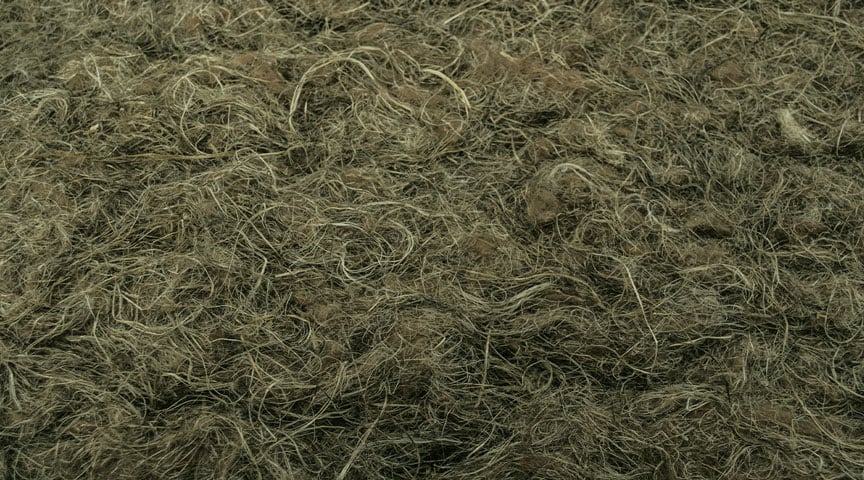
Biofuel
Hemp extract can be used to create hemp ethanol and hemp biodiesel, two biofuels. Although the environmental credentials of biofuels are not completely known, hemp could provide a viable alternative to fossil fuels in the fight to halt climate change.
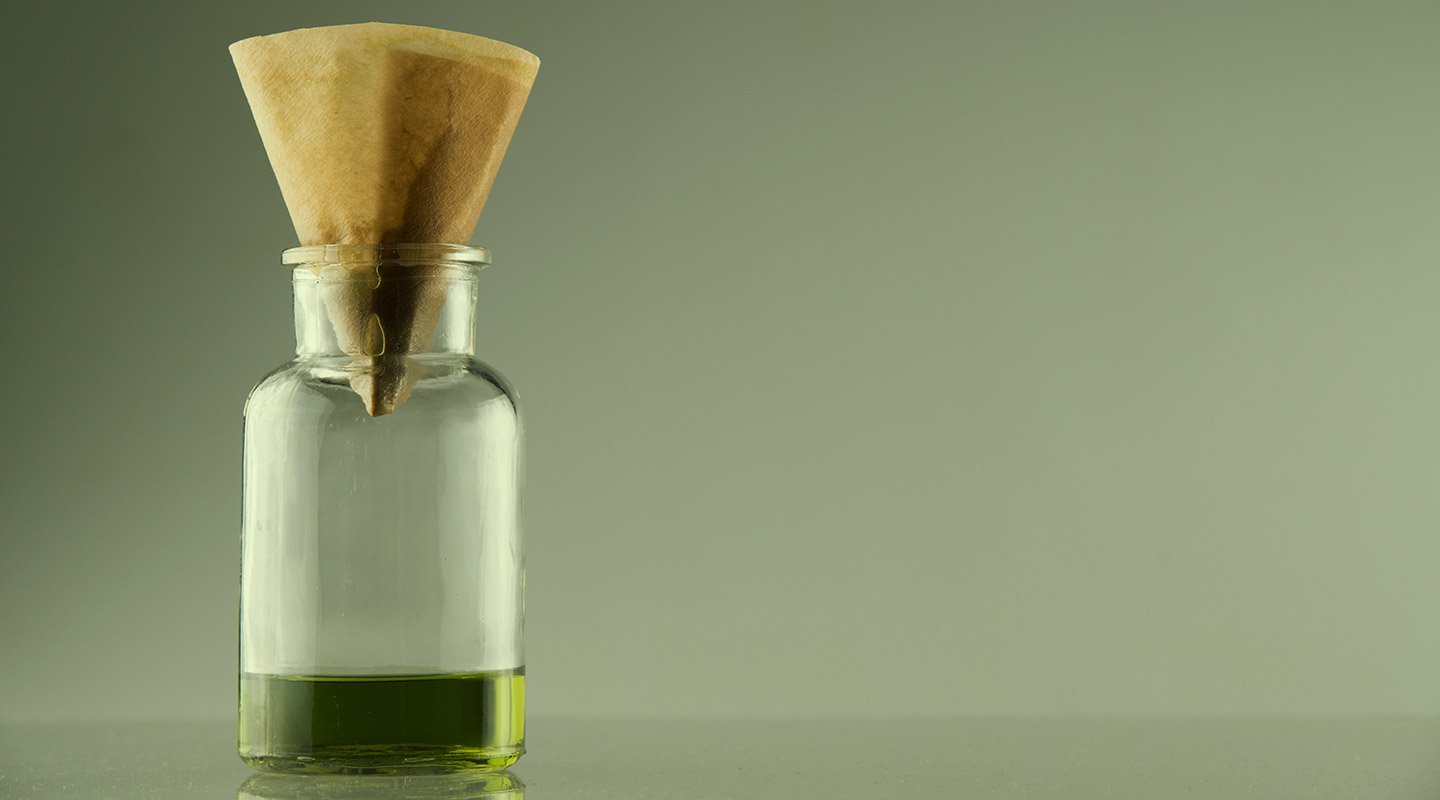
Plastic Composites
Hemp plants are 60–70% cellulose, and cellulose is not unlike a natural plastic. Due to the properties of cellulose, it is possible to manipulate hemp into plastic, and then manipulate that into anything we might like.
You might think that the only use for hemp plastic would be cutlery at a vegan food stand, but it is being embraced by all sorts of industries. It is even used by car manufacturers to make things such as dashboards. So hemp products aren’t for hippies only. You can cruise along while taking in the fine finish of your hemp dashboard.
While well-made hemp plastics can provide environmentally friendly alternatives to normal plastic, they only go some way to solving the issues surrounding plastics in general. Though they are biodegradable, this is a loose term, and they can still take many, many years to break down—that’s long enough to suffocate a few turtles first!
Likewise, being made from carbon-consuming plants, they will expel carbon dioxide as they degrade. But normal plastics would too, if they could biodegrade. So while hemp plastics may be a helpful step, don’t go chucking them out the window thinking they’ll be gone with the next rain!
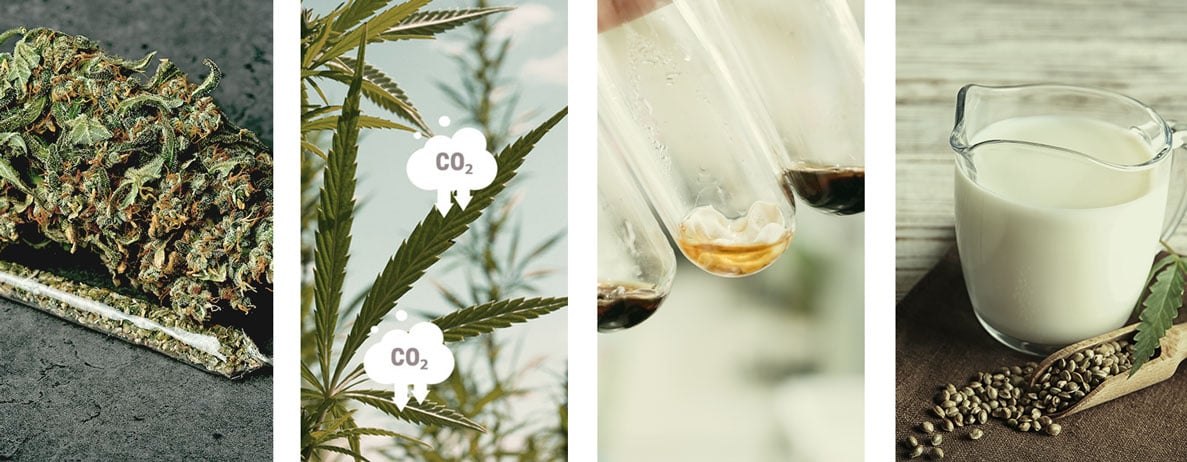
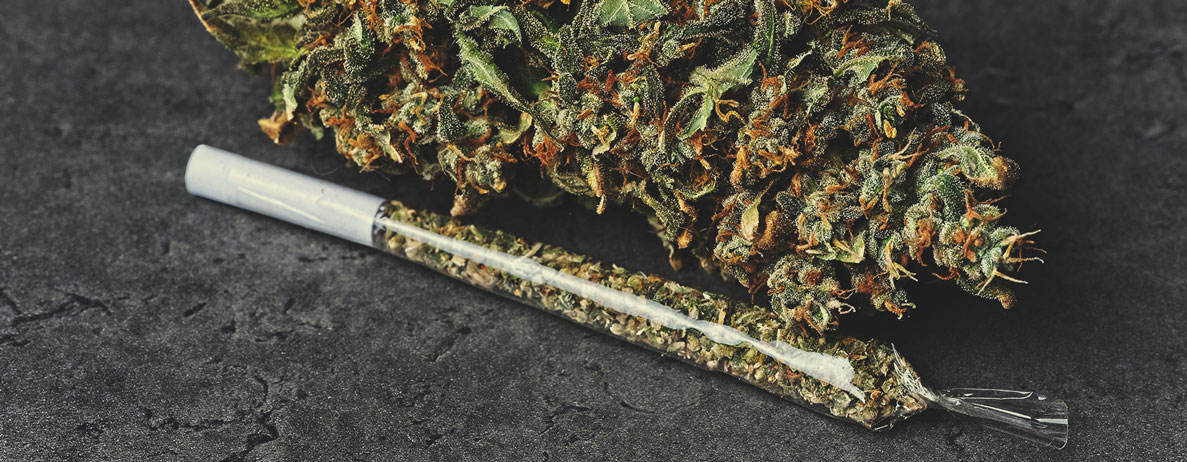
Carbon Farming
In a serious blow to those who think all the hype around hemp is nonsense, it actually absorbs more CO₂ from the atmosphere than any other plant or organism (as far as we know). This makes hemp farms the single best, gram for gram, organic carbon sink we have.
Moreover, once carbon dioxide is absorbed into the hemp plant, it is sequestered very efficiently, meaning only combustion or complete degradation will release that CO₂ back into the atmosphere. This means that hemp products such as textiles, hempcrete, and paper are actually fantastic carbon shops too!
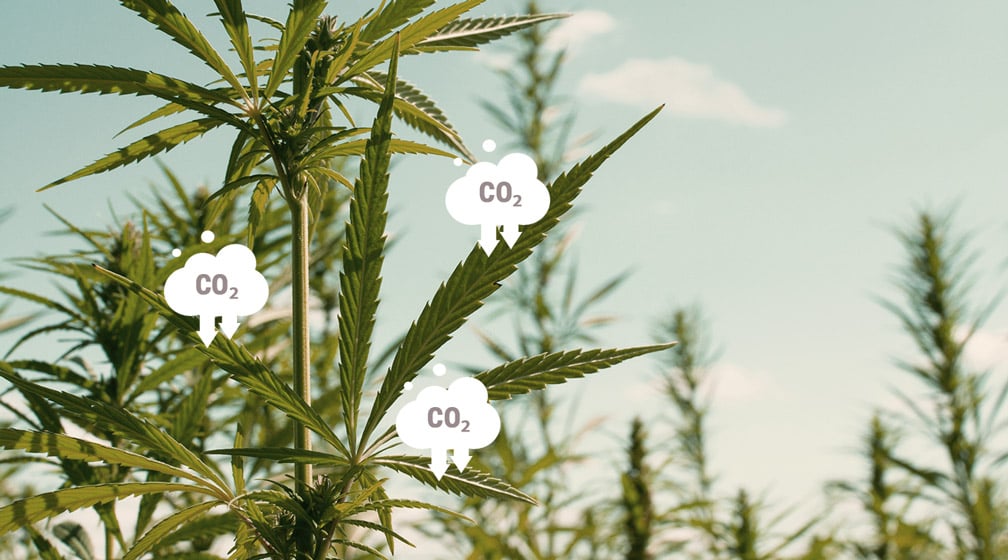
Bioremediation
Hemp is renowned for being a tough plant that can grow in testing conditions. As such, it can be used to replenish poor-quality soil. By planting it in low-nutrient, high-toxin soil, the soil health can be rejuvenated. We are beginning to realise just how important the Earth’s supply of soil is, and just how much damage we have done to it. Using hemp, we may be able to undo a little of that damage.
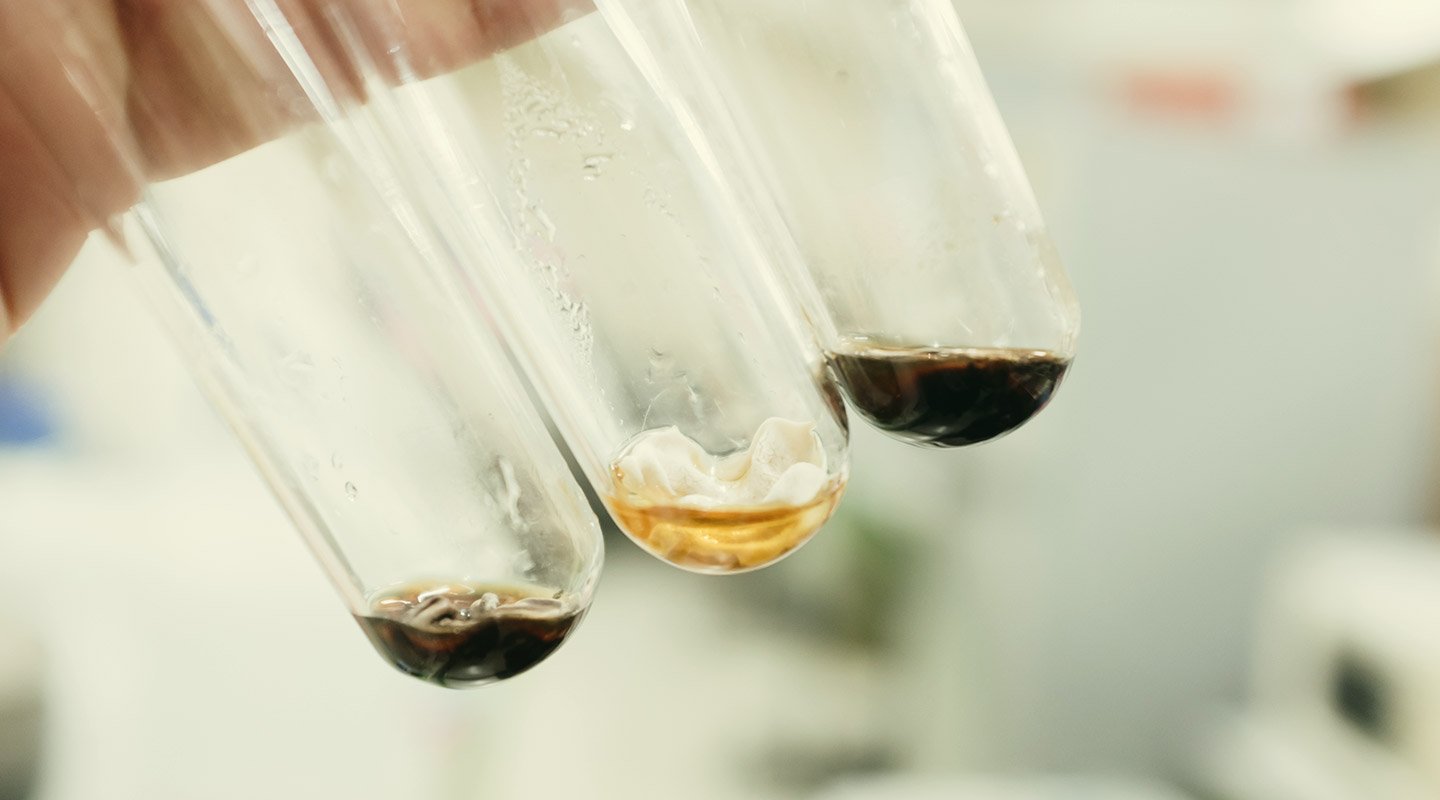
Seeds
Hemp seeds aren’t just used to grow more hemp. They are an important source of nutrients as well. Ever had hemp milk? It’s made from blending the seeds with water, essentially. Many hemp oils and food products are made from the seeds, rather than the body of the plant.
Of course, we can also use them to grow high-CBD hemp strains too.
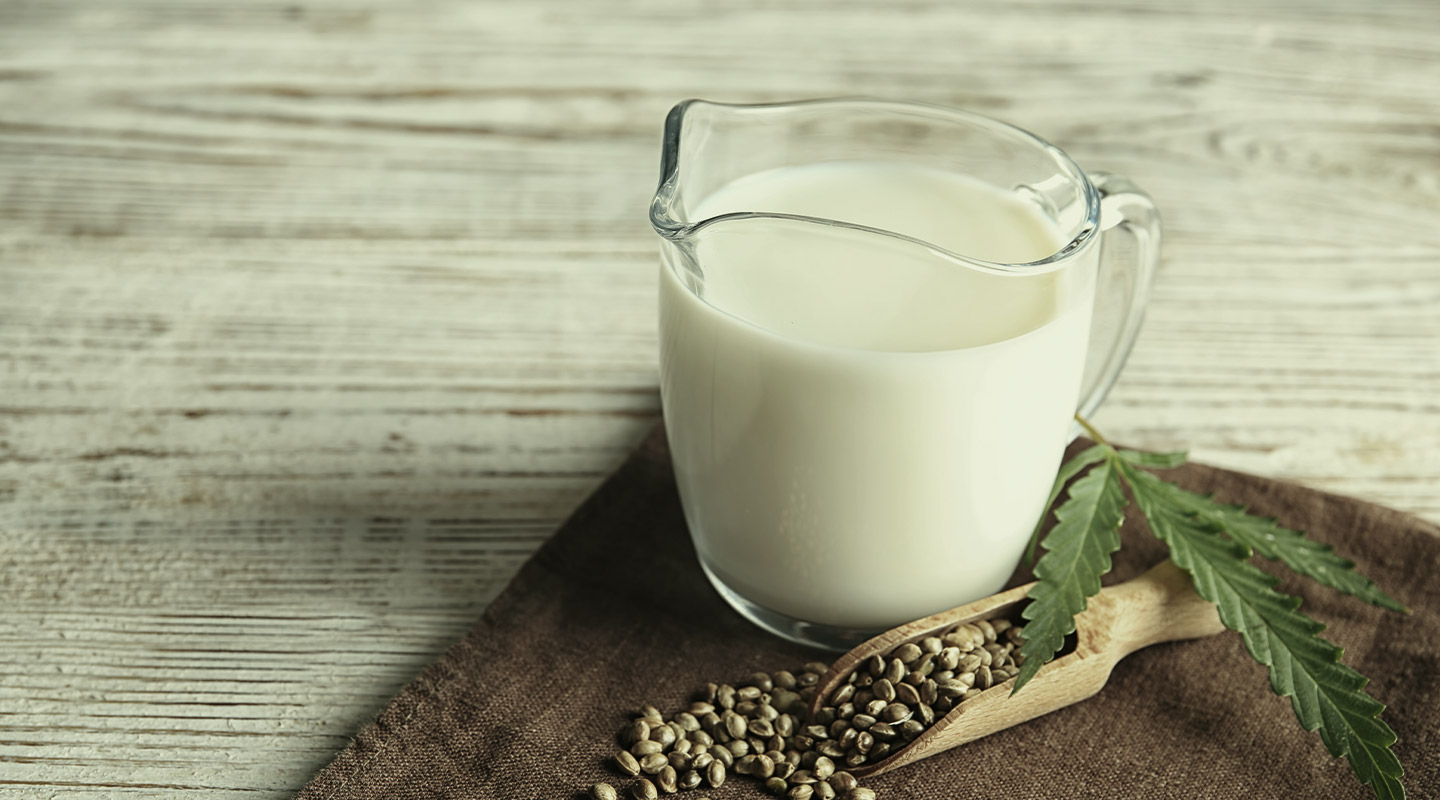
The Evolution of Hemp Farming
Hemp farming is now a huge industry worth billions of dollars. From large-scale farms producing hemp for construction to us at RQS producing the very finest CBD products, you can sense hemp’s influence almost everywhere.
Hemp Cultivation Quality Standards
The end product determines how hemp is cultivated. Hemp used for hurd and bast tends to be grown outdoors in large fields, beneath the sun. Tough and reliable, it’s cultivated much like any other agricultural crop, and harvested with large machinery once mature.
Hemp grown for cannabinoids, on the other hand, is grown much like cannabis. Often in greenhouses or indoors, using either artificial lighting or the sun, this hemp is grown under strictly controlled conditions. So long as industrial hemp grows and survives, its fibres can be used. Hemp grown for cannabinoids, however, needs to be grown to the best possible standard. Some sort of flower is not enough. It needs to be rich in the desired compounds.
In either field, hemp production is a highly professional and specialised practice.
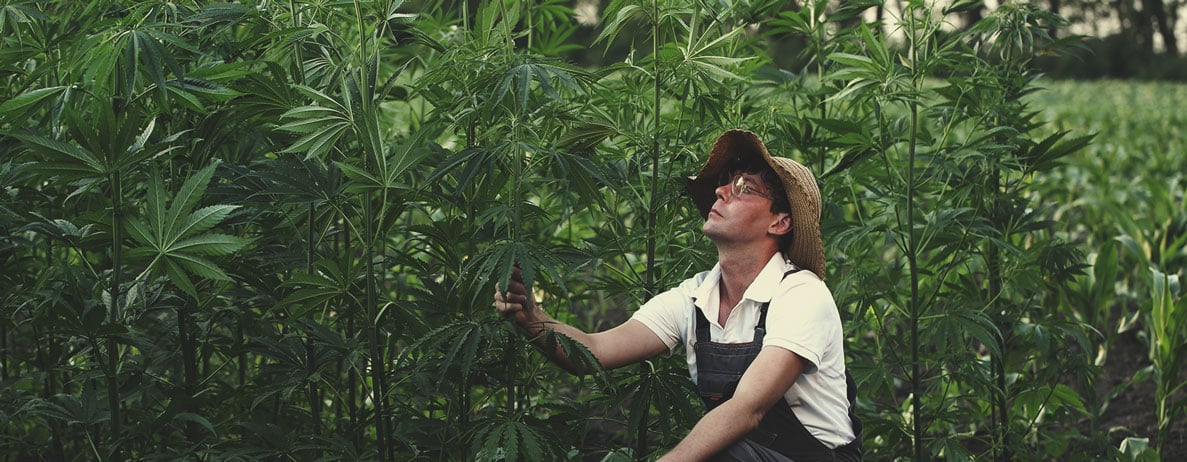
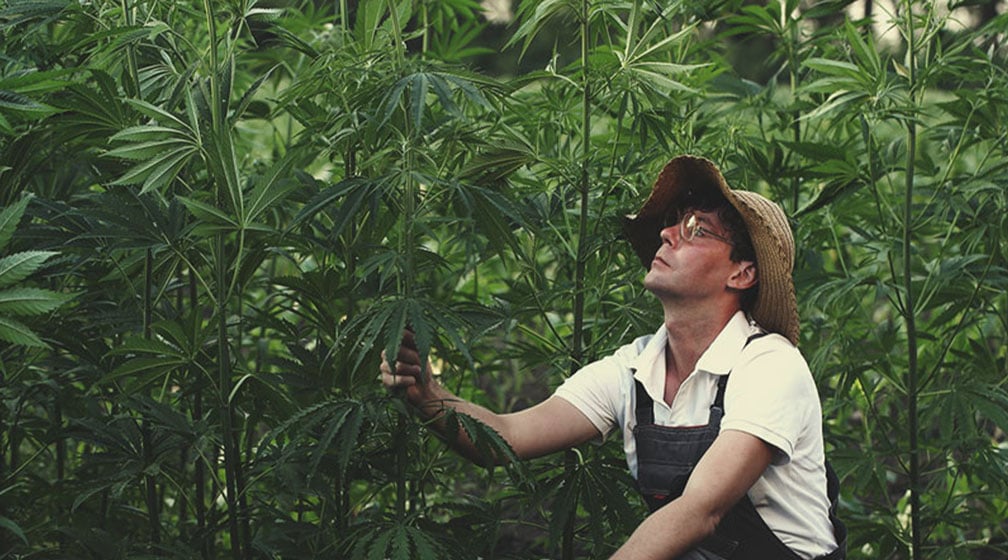
What the Future Holds for Hemp
Due to the tight restrictions on legal levels of THC, many CBD and CBG-rich hemp plants lack the resin and terpenes we associate with cannabis plants. This means that products can be significantly more dull and less delicious than many smokers might be used to. Whereas cannabis plants can be terpene-rich, full of flavour, and coated in resin, CBD buds can often be dry, flavourless, and boring.
But this is changing. As the market grows, strains with the qualities of cannabis, but the cannabinoids of hemp, are becoming more and more common.
However, flowers are not the only answer. In fact, CBD and CBG are most commonly consumed as extracts, often oils. These oils can come in a simple tincture, or imbued into something else. CBD gummies are available, as are creams and lotions. In fact, walk into many health shops these days and they’ll have whole sections dedicated to CBD products.
As time progresses, we can expect these products to get better, grow in variety, and have more defined uses.
How To Source CBD-Rich Hemp Seeds
High-CBD industrial hemp seeds can be sourced from specialised seed banks and breeders, though many CBD plants in the industry are grown from clones, as this makes the cannabinoid content more reliable. Within each generation, especially from poorly stabilised plants, small changes can occur. And as THC levels need to be so exact in commercial hemp products, it’s often simpler to grow from clones.
That being said, if you want to have a go at home, you can source yourself some CBD or CBG cannabis seeds from seed banks like RQS. Although not the same as hemp seeds, you can grow plants that display even higher levels of these cannabinoids in many cases.
How To Grow CBD Hemp Seeds
Much like cannabis plants, high-CBD industrial hemp strains come in photoperiod and autoflowering varieties. This means there are options available for all types of growers.
Hemp grows much like cannabis, but if anything it's a little easier. Though if you want it to be packed full of cannabinoids, you are going to have to take some care of it. Much like weed, it loves sun and water. Being tough, it can take minimal nutrients, especially if autoflowering, as these have robust ruderalis genetics in them too.
RQS Pro: Taking Professional Breeding To The Next Level
RQS Pro is a newcomer to the professional hemp seed market, and intends to make a big splash. A branch of Royal Queen Seeds, RQS Pro is all about innovation and development, focusing on the development of reliable hemp and cannabis seeds. By researching cannabinoids and other compounds, we will identify and isolate the most relevant characteristics of cannabis. From there, we will breed and stabilise these seeds for the professional market.
Alongside researching genetics and plants, we will also be developing the latest in cutting-edge technology and growing techniques, allowing us to push the boundaries of the industry.
The future of hemp farming looks bright.



























